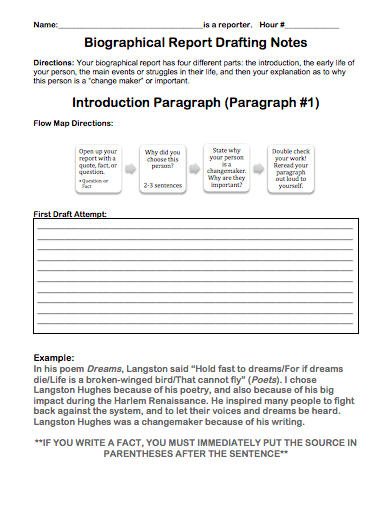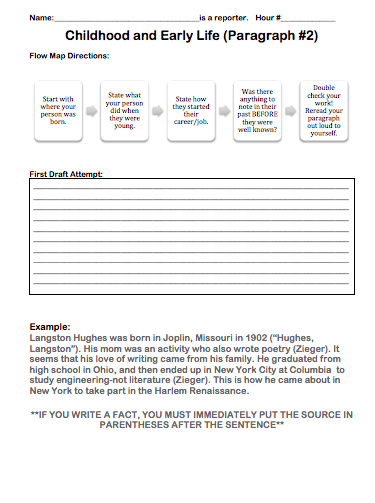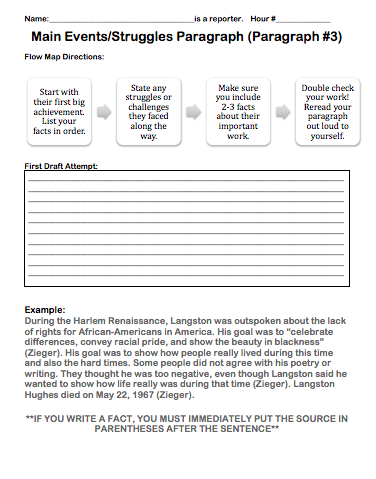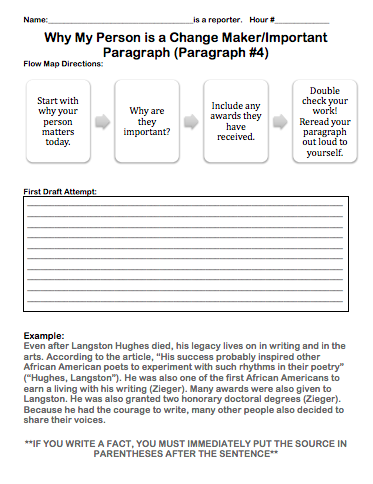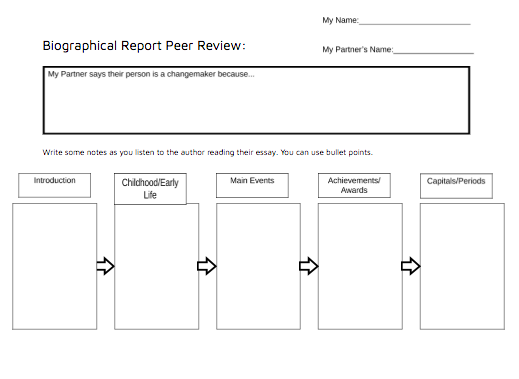Quick Tips for Teaching the Middle School Biography Writing Project
Driving Student Curiosity with Biographical Reports
Independent learning is always the goal. Biographical reports each year mark one of the first big projects where the gradual release of responsibility actually happens. Biographies are more than about choosing a person that seems interesting, it is about giving students the ability to show interest and make choices in what they are learning. The goal of all teachers should be to teach our students to go find the answers that they seek. A natural curiosity is what drives the passion behind real learning. There is always a moment with this project that I step back, listen to the fingers clicking and clacking on keyboards, see the focus in eyes on screens and books, and the drive to write down facts, and I think to myself: “Learning looks like this.” This post outlines my entire process from directions to the beginning of assessment for biographical report writing in my middle school English Language Arts classroom.
Before we begin the project, students are guided through practice paragraphs. It is always interesting to me where teachers think students should and should not be in terms of writing ability when they reach middle school. Year after year, the review of paragraph writing is one of the critical elements in moving forward into larger projects later on in the year. I start by finding 4-5 articles that are about interesting people. They are specifically high-interest people to start gaining traction with the project before we begin. The first people I grabbed this year were Serena Williams, Bethany Hamilton, Helen Keller, and Nina Simone. We take notes on paragraph writing, watch video clips, hear audio clips, and then practice writing a biographical paragraph together. After that, I assign clockwork partners and release them to practice on their own with other classmates.
Topic Selection
Then, we are ready to choose our person. I start by saying, “Last week, we practiced on people assigned to us. This week, you get to choose.” I provide a bank of people for them to explore. Often, I get students who do not know where to start. I tell them to first, choose a category. After selecting an interest, they can choose a person from a category that seems like someone they may be interested in learning more about. Even if they choose someone not on my given list, it is a place to start to get kids interested and willing to buy-in to the project.
During the topic selection process, I try to gather as many biographical picture books from the library as possible, and then we are off to the races in terms of exploration. I love exploration days. They remind me why I became a teacher because kids get to be curious about their own learning. We grab books, we look up names, we talk to one another…it is great. Also, It always makes me ask, “Why aren’t I doing this all year long? Why am I not making this curiosity the driving force behind all of my instruction?” This might be reserved for a later post, but working in the ability to have students go find information from reliable sources and databases does not just apply to informational and research writing. There is a way to work this skill-set into other units throughout the year and sooner if possible. Showing my students how to find the answers to questions that they seek may be one of the most important things I teach.
TOPIC SHEET
Read Example Papers
Students always want to critique sample papers for grammar and conventions, but the main reasons for why we examine sample papers are for organization and ideas. I want them to notice that there is one idea per paragraph, and I want them to see that there are four paragraphs in total. This builds on from the paragraph writing work we did before we started the project. We always read these papers out loud together as a whole group, and then we write on them together. This also reinforces the idea of annotating the work we are reading to promote comprehension. I include a mix of showing previous student work and my own example paper about Langston Hughes.
EXAMPLE PAPER ON LANGSTON HUGHES
Learn About Sources and Databases
Before we jump into the next unit of research, the biographical report introduces the idea of the definition of sources. Students begin to understand in middle school that sources are concepts that familiar, but now they are named. I always start with the example of students as original sources of information. I use acting as a way to access prior knowledge for students:
Imagine there is a dragon that has broken into the cafeteria during lunch. If I wanted to know what happened, who would be a great primary source? If you went and told the teacher next door, and then that teacher told me, what counts as a secondary source?
After I have a student act like they are telling me about a crazy incident in the cafeteria, we apply that knowledge to vocabulary terms and definitions. We see examples of both primary and secondary sources. Using this knowledge, we take notes on where these are located and also how to evaluate different sources of information. Books and websites as sources begin the conversation and then later articles are introduced when doing research. I like to introduce one database at a time using the Michigan E-Library resources, and then add on when they feel comfortable navigating to one resource.
Review Note-Taking
The bulk of this project is in the note-taking. When I first started this project, I did a packet that contained the five W’s or who, what, when, where, and why. This was confusing to transfer over to four paragraphs, so now we take notes on one particular paragraph topic at a time. This was much clearer this year as students were taking notes, and then they will also be able to transfer quotations over to their writing much easier because it will be one page of information. I always reiterate that writing down where you got your source information is the most important part of this process. Students will attempt drafts with adding in their facts, and then they will learn how to add in-text citations. I always first look for in-text citations to be present during this project, and later in the research project I look for correctness within the parentheses. We talk about taking the value of taking short notes, what kind of information is important, and how to include the source information. We also see examples of source pages that show good note-taking skills.
Conferences and Drafting
Including the drafting pages at the end of the packet allows for students who are comfortable with note-taking to move further ahead in the project when they finish one section. This differentiates for learners who are ready for a challenge. The best way to do this is by using sentence frames with the example paragraph on the same page. While this can limit creativity in terms of writing and style, I find it is often necessary to teach our struggling writers the rules of organization first before we teach them to break those rules. My writers in class first use the sentence frames and outlined steps in case they need more help, and they also see these frames in action during modeling on writing workshop days. I check-in with them during writing conferences, and by having the steps outlined, I have tangible questions to ask along the way. When we get to a place where most people have a working draft, I like to hand out a peer review form to provide a checklist for revision. I will write in 2-3 things to look for during the first peer review as we are building these skills during our writing workshop.

